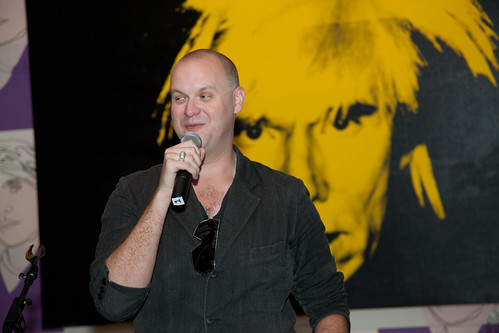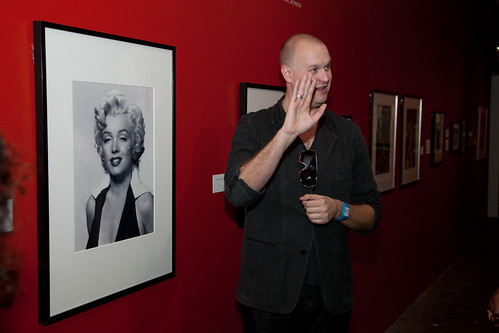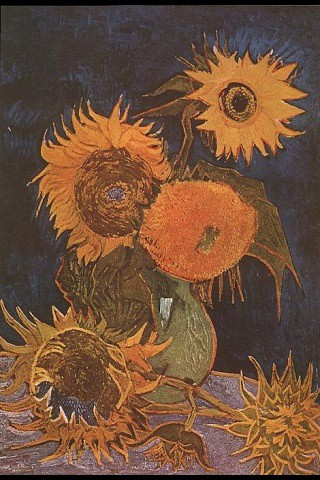Posts Tagged ‘paintings’
Famous Abstract Contemporary Art Paintings

Image : http://www.flickr.com
Abstract Art came about in the last few centuries where artists sought to move away from pure realism painting and put in their own style and emotion into the subject of their painting. From the Renaissance and Baroque styles of almost photo-realistic paintings, abstract contemporary art began to become popular.
Romanticism, Impressionism and Expressionism followed on from the traditional art styles and started to allow artists to impress their own creativity. Such styles laid the foundations for the later art movements which are collectively referred to as Abstract art, in the modern era.
Post-Impressionism continued the change towards abstract art yet further, thanks to works by the likes of Paul Gauguin, Georges Seurat, Vincent van Gogh and Paul Cezanne. Inspired by the likes of Paul Cezanne, Fauvism & Cubism were created, bringing famous artists like Henri Matisse, Georges Braque, Wassily Kandinsky & Pablo Picasso to the public’s attention. Synthetic Cubism also followed. The Abstract Contemporary style that we have now was ready to be created at this point.
In Britain the first Abstract art exhibition was opened in 1935, with paintings by the likes of Piet Mondrian, Joan Miro, Barbara Hepworth and Ben Nicholson on display the following year at a more international event.
The attack on art by the Nazi party in the 1930s and 1940s forced some abstract artists to flee to America which resulted in the likes of Modernism, Late Modernism, American Modernism, and Surrealism starting to gain popularity, particularly in New York. These attempts to control art’s direction actually helped to spread communication of these new art movements to the rest of the world.
The 1950s to now have brought us the likes of Neo-Dada, Fluxus, Conceptual Art, Neo-expressionism, Installation art, Performance Art, Video Art and Pop art. Pop Art of course remains hugely popular today with the likes of Andy Warhol and Roy Lichtenstein still selling well.
Modern Abstract Contemporary art styles include the likes of Abstract expressionism, Color Field, Lyrical Abstraction, Post-Painterly Abstraction, Sculpture, and Minimal Art, though new movements appear all the time, particularly with the influx of computer based artists, and different styles of digital art.
Tags : history Book of Art Free Online Advertising soda.co.cc Antique Mailbox
Basic Knowledge on Pop Art Paintings

Image : http://www.flickr.com
Pop art was an art movement that initially occurred in the United States of America in the early sixties. The epicenter of this art phenomenon was New York, the city confirming its trend setting leader position. Although this movement strongly erupted in the early sixties, the attempts of change started during the late fifties in the work of Robert Rauschenberg and Jasper Johns. These painters wanted to replace the abstract mode of artistic expression, aiming at making the art’s message easier to be understood by the public. The first pop art paintings contained easy to recognize images of common items. The purpose of incorporating these objects was to mock the gravity, the metaphysical dullness of abstract expressionism that had started to become out of fashion. Jasper Johns and Robert Rauschenberg introduced amusing objects into the first pop art paintings: flags, maps and targets or stuffed animals and rubber tyres for the latter artist. The pop art movement become famously known for their main feature: mockery and irony.
Claes Oldenburg, James Rosenquist Andy Warhol and Roy Lichtenstein were the most representative artists for this new art stream. Their pop art paintings were characterized by their original display of popular culture’s symbols: advertisements, media images or even comic strips. These new, colorful, lively pop art paintings were strikingly opposing the gravity, the spirituality of abstract expressionism. Consequently, these kinds of pop art paintings become very popular among the art loving public and among the art critics community. But the abstract expressionism continued to be highly appreciated, despite the pop art paintings’ mockery.
Although the pop art movement was popular and influential it proved to lack the strength of completely supplant the abstract expressionism, but it determined the birth of two new schools of abstraction: color-field painting and minimalist art. The color-field painting movement (mainly represented by painter Helen Frankenthaler) minimized the influence of abstract expressionism’s old features into a style completely committed to the use of pure color.
The American art of the sixties remained in the art history books as a period of constant rivalries between different competing styles and ideas. Yet, the pop art paintings represented best the ideas and the symbols of the American lifestyle in the sixties.
Visit : Painting Instructional history Book of Art Personal Transporter. At Segway Aluminum Mailbox Home Mailbox ideal_Decor
Flower Paintings in History

Image : http://www.flickr.com
Since the beginning of time man has appreciated the sheer beauty and remarkable symmetry of the clusters of brightly coloured petals surrounding the secretive inner heart of a bloom.
Used over the centuries as poignant symbols of love and grief, flowers have entranced and challenged artists to reproduce their perfection onto the confines of a canvas.
Early religious symbolism
Floral paintings, saturated with religious symbolism, were created by artists as early as the 13th century but by the time the early renaissance painters were reaching their artistic peak, symbolism made way for sheer appreciation of floral bouquets as worthy still life subjects.
Reportage art
The 16th century was characterised by the exploration of the new world and the associated fascination with a seemingly boundless collection of new and unique natural varieties. Flowers, together with all the other intriguing species, were carefully recorded as scientific specimens, with very little emotive collaboration.
It was a century later that flower paintings, created out of oils, became a major trend where sheer aesthetics outweighed the earlier religious or scientific prescriptions on creativity.
Emotive symbolism
Although religious symbolism had been banished earlier from the realm of the artist, flowers now began to represent a host of human emotions and were depicted as such:
The rose – love.
The lily – purity.
The tulip – nobility.
The sunflower – devotion.
The impressionism of Manet
One of the artists, pivotal in the timely transition from realism to impressionism, was the great French artist, Edouard Manet, who, with his loose brushstrokes, simple forms and contrasting colours, created floral art which resonated with life. His brilliant rendition of a vase of flowers, titled ‘Carnations and Clematis in a Crystal Vase’, is a case in point. Accuracy was forced to make way for artistic interpretation for the first time in history of floral art.
The dramatic floral dabs of Claude Monet
The great impressionist, Claude Monet, was mesmerised by the brilliance and bounty of Mother Nature. Instead of concentrating on a single bloom however, he used his dramatic dabs of paint effectively to create walls of flowers, one indistinguishable from the other. Monet was so smitten with the impact of flowers in painting, that he dedicated most of his life to the creation of priceless works of art including ‘The Artist’s house at Argenteuil’, ‘Poppies Blooming’ and ‘Flowering Garden at Sainte-Adresse’.
Vincent van Gogh‘s Sunflowers
Arguably one of the most famous floral artists of all time was the Dutch post-impressionist Master, Vincent van Gogh, whose studies of sunflowers were rather more stylised portraits of the subject, created with his trademark broad, almost careless, brush strokes. A recent estimate valued Van Gogh‘s ‘Vase with Fifteen Sunflowers’ at $77m and ‘Irises’ at over $101m!
Botanical Art
Floral art has, in effect, come full circle with creative expressionism being replaced with botanical art, where the subject is faithfully reproduced in a realistic fashion. Artistic expression has made way for observational art, an art form which can quite easily be compared to the ‘reportage’ art of the 16th century.
Friends Link : Thai-English English-Thai Dictionary Painting Instructional history Book of Art Mailbox Mailbox Designs
Concept Lighting 102 11-1/2-Inch Ultra Efficient Cordless
From the Concept Cordless series comes this sleek design light in a antique brass finish. A generous, evenly distributed warm white light comes from the picture light, giving you a warm color rendition. A remarkable battery life of 40 hours allows you to illuminate your paintings for longer than most battery operated picture lights. The light’s minimum vertical profile, makes it look like a conventional picture light. Tested for UV, making it safe for artwork. The convenient on/off switch makes it easy to use. Includes one 6 watt T5 warm white bulb. Takes four D batteries (not included). 11 1/2″ wide.
Concept Lighting 102 11-1/2-Inch Ultra Efficient Cordless Picture Light, Antique Brass